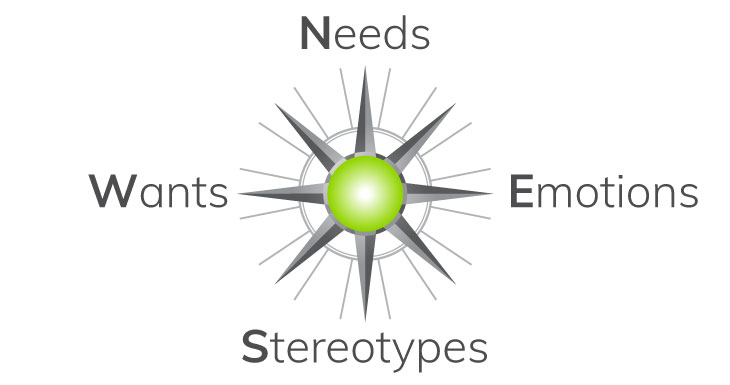Your business isn’t really in retail, finance, technology, etc. Surprised? That’s part of what you sell, but the most successful brands realise that their business hinges largely on the customer experience. In fact, in 2021, the customer experience is forecast to be the key brand differentiator – overtaking price and product. Here are tools you can use to create a customer experience strategy that amplifies your client engagement.
Think Disney, Amazon, Google, Apple; even our own Takealot and Netflorist. All these organisations do more than just sell you a product or service – they give you an experience.
But knowing the success of your business depends largely on the customer experience and making the kind of changes in your business that’ll revolutionise the experience are two different things. Sometimes incremental changes aren’t enough when your entire industry can be disrupted by companies like Uber and AirBnb.
This doesn’t always mean you need to overhaul your entire business, but it does mean losing sight of your customer experience can be fatal. A customer experience strategy can help you prevent this.
Tools for a Better Customer Experience
Support Your Employees
This may sound strange for a customer experience, but it’s critical for its success. Take McKinsey’s example of an airport, where staff avoided interacting with travellers because they didn’t know the answers to their questions (a lack of training) and they weren’t given a space away from customers to take a break. This frustrated everyone – including travellers.
Further, if your employees don’t feel cared for, why would they be interested in making your customers feel cared for? The culture of care and commitment to a positive experience is something to be invested in at every level. This means involving staff in decisions around this and uniting them with a common goal or mission. At Disney, for example, their common purpose is to “create happiness”.
Once you’ve collectively settled on the customer experience goal, keep meeting with staff on the matter. McKinsey’s airport in their example was still having weekly meetings with more than 50 staff members to consistently reinforce their aspiration. It isn’t something you can do once and leave – it has to be an ongoing commitment, or motivation will wane.
The Compass Model
Walt Disney has always been anchored in the customer experience. Something they’ve used to guide their customer experience for decades is what’s known as the Disney Compass.

Here’s how it works:
- North (N) – Needs
This is about meeting the minimum requirements that a customer needs when visiting your business.
- West (W) – Wants
This goes above the bare minimum, aiming to provide the customer with the things they want too. When you provide this, you amplify the customer experience.
- South (S) – Stereotypes
This is about addressing the beliefs a customer may have of your business due to your business stereotype. For instance, doctor’s rooms are notorious for being late and keeping you waiting. To address this, you can work to reduce waiting time.
- East (E) – Emotions
The way a customer feels about your business is often more important than logic when it comes to buying decisions. It’s so important to address their emotions, provide an experience that brings them joy, and build that into your systems so it’s always in mind.
Additionally, Harvard Business Review says that “fully connected customers are 52% more valuable, on average, than those who are just highly satisfied.” Connecting to your customers on an emotional level in your marketing and client nurturing is what separates the whales from the small fry.

Understand Your Clients
Unless you understand who your customers are and what they really want, you’ll have a difficult time knowing how to give them an experience that brings them joy. Start by creating client personas for the types of clients you work with. You can also run surveys to collect targeted and detailed customer data – adding depth to your personas.
Client personas are personalised archetypes of clients based on actual data from your target audience. Learn how to do this in Part 2 of our Content Marketing Strategy Guide Series.
Another level to this is understanding where your clients come from. How do they link to your site in the first place? Use a UTM creator like UTM.io to track where your website traffic comes from via Google Analytics. This way, you can master your presence on these channels and double down on the experience in those places.
Once you know more about who they are, start collecting this data and using it to hyper-personalise their journeys. For instance, if you know that certain customers are there for one product and the others are there for something else, you can segment your database and only send messages that are relevant to their needs. You can even customise the experience by level of engagement, sending special deals to more engaged clients.
Map the Client Journey
Much like when you create a content strategy, creating a customer experience strategy, it helps to understand the client’s journey when interacting with your business. This helps you to get an idea of their experience at every touchpoint.

Mapping your customer journey helps you to put the customer first and it provides context for your customer experience initiatives. Learn how to map your customer journey in Part 3 of our Content Marketing Strategy Guide Series.
Know the Competition
What’s the customer experience norm in your industry? Are you meeting it? Can you improve on it? Understanding what kind of customer experience your competitors are providing will help you make these decisions.
According to Quicksprout, tools you can use for this include:
- SpyFu: Gives you a view of the organic and paid clicks that your competitors are getting, what their top keywords are, and where their backlinks are coming from. This can help you replicate and improve on their strategy.
- Talkwater: Social listening tools like this can keep your ear to the ground about what’s being said about any brand in the media. Track your brand and your competitors to monitor brand sentiment and to understand the common complaints and praises.
Additionally, you can research them a little. Go onto their website and see what interacting with it is like as a customer. Follow them on social media to see what kind of content they’re sharing and what kind of questions they get asked. The more you know about them and their clients, the better you’ll be able to support your own clients.
Get Smart Communication Tools
Many touchpoints on your customer experience will be a million times easier to implement and maintain if you have the tools available to automate it. With a communication platform like Everlytic, you can:
- Connect with customers on multiple channels, all in one place.
- Improve customer engagement with hyper-personalised communications that are relevant to their demographics and responsive to their behaviour.
- Collect customer behavioural data and adapt their customer experience accordingly.
- Track and analyse which communications work best, so you can tweak for the best results.
These days, a great customer experience can separate you from the competition. Don’t let it be what gets you left out of the running.
Get Your Communication on Trend in 2021
With post-2020’s ‘new normal’, business communication has changed. What impact do these changes have on your business in 2021? In our guide, Communication in the ‘New Normal’: How to Prepare for 2021, we explore the trends that have emerged from this new way of life and what that means for you.



